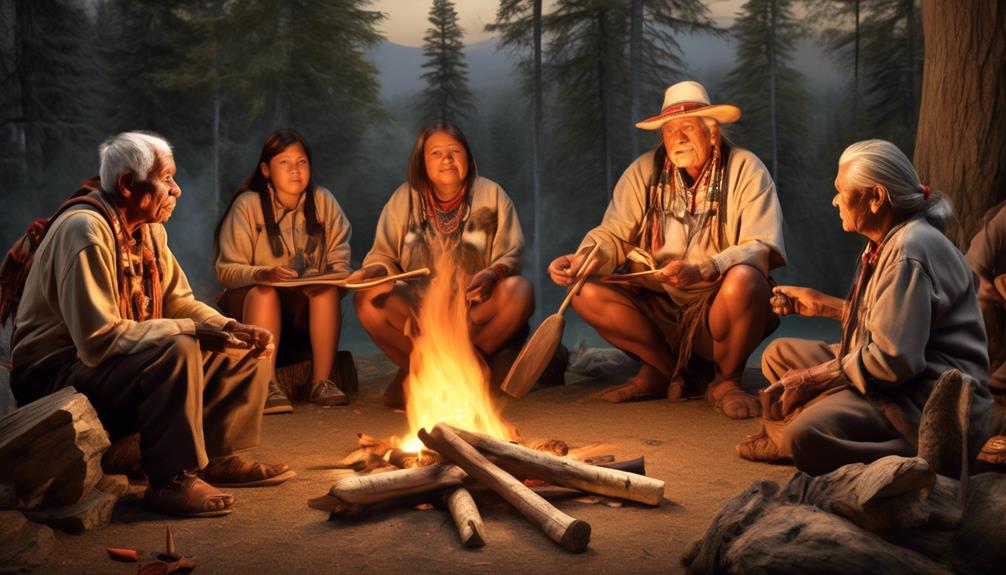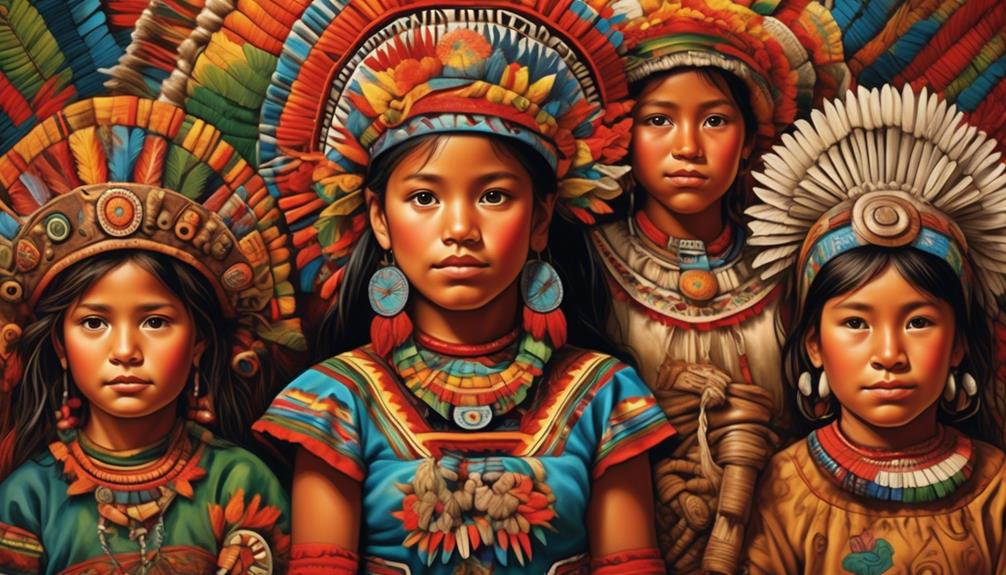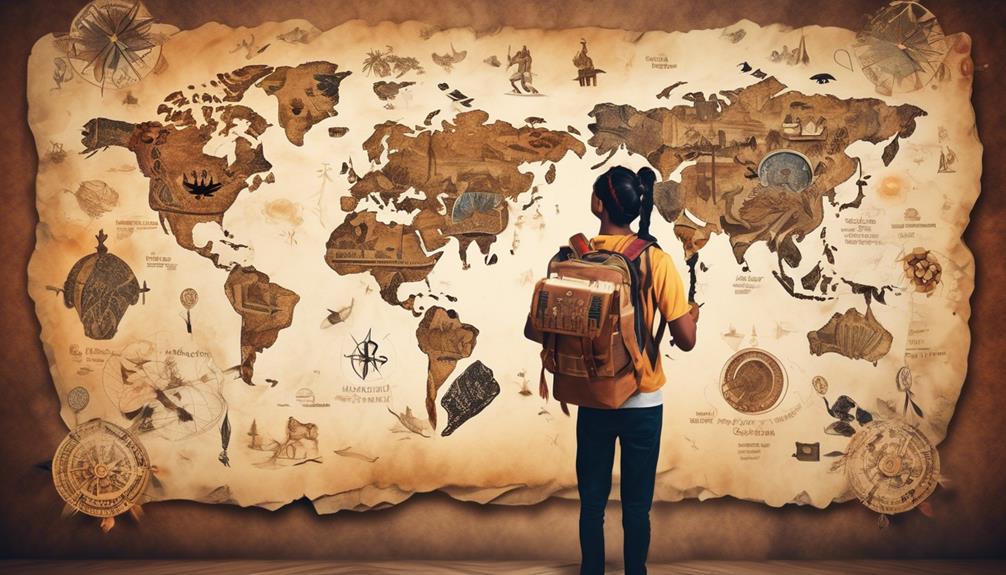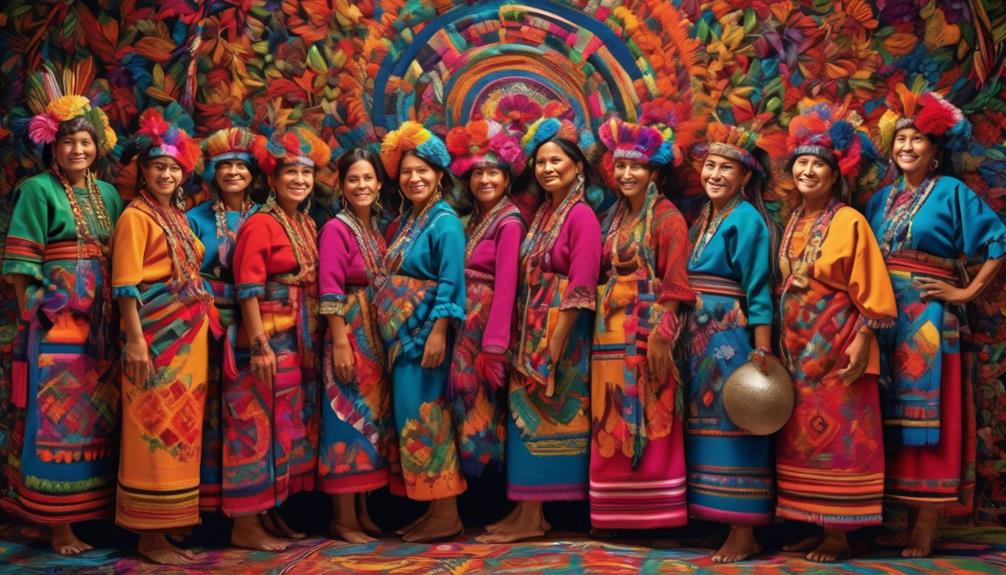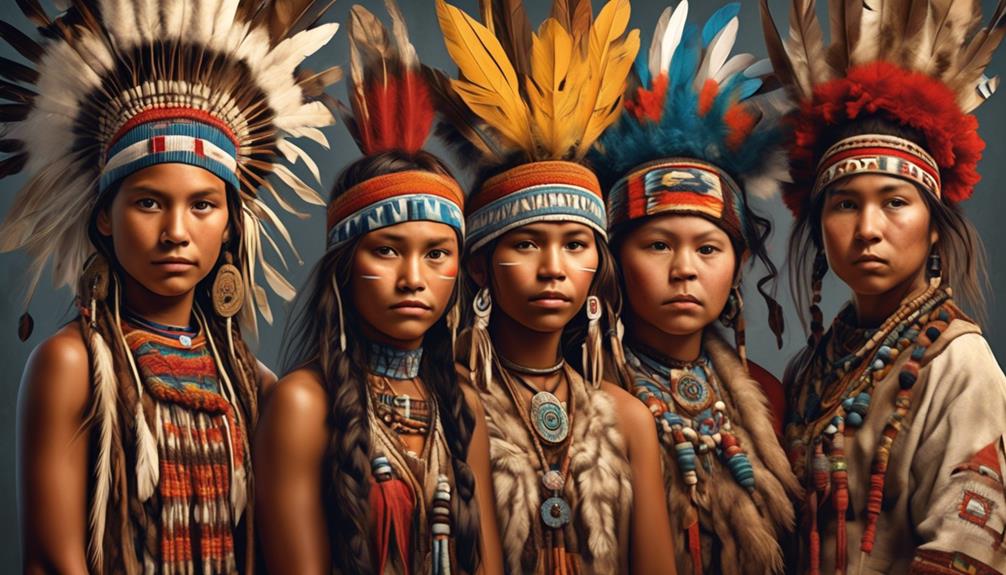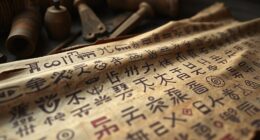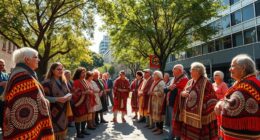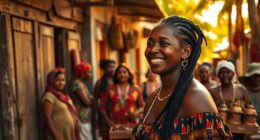You’re probably already familiar with the saying, “Don’t judge a book by its cover,” correct? The same idea applies when it comes to talking about Indigenous identity – each person should be judged based on their own unique qualities and experiences.
The complexities of Indigenous identity go far beyond superficial markers, and the question of who truly holds this identity is a multifaceted one. From historical perspectives to contemporary debates, the topic of Indigenous identity raises crucial questions about belonging, heritage, and power dynamics.
But who really gets to define what it means to be Indigenous? The answers may surprise you.
Key Takeaways
- Indigenous identity is shaped by cultural connections, ancestral ties, traditions, language, spirituality, and relationships with the land.
- Despite colonial impact, Indigenous peoples have demonstrated cultural resilience and upheld their traditions, languages, and spiritual beliefs.
- Cultural appropriation commodifies and exploits Indigenous cultures, eroding the authenticity and cultural sovereignty of Indigenous traditions.
- Community recognition and involvement of Indigenous communities and elders are crucial in determining Indigenous identity, and the authority to determine Indigenous identity should reside within Indigenous communities themselves.
Defining Indigenous Identity
Defining Indigenous identity is a complex and multifaceted endeavor that requires careful consideration of historical, cultural, and social factors. Cultural connections and ancestral ties are fundamental elements in understanding Indigenous identity. These connections are deeply rooted in traditions, language, spirituality, and relationships with the land. They aren't merely historical artifacts but living, dynamic forces that shape the present and future of Indigenous communities.
Cultural connections encompass a wide array of practices and beliefs that have been passed down through generations. They form the bedrock of Indigenous identity, providing a sense of belonging and continuity. Ancestral ties, on the other hand, link contemporary Indigenous peoples to their forebears, grounding their identity in a rich tapestry of heritage and wisdom.
Recognizing the significance of cultural connections and ancestral ties is crucial in defining Indigenous identity. It requires a nuanced understanding of the diverse ways in which Indigenous peoples express and experience their cultural heritage. By acknowledging these connections and ties, we honor the resilience and vitality of Indigenous communities, fostering a deeper appreciation for the complexities of Indigenous identity.
Historical Perspectives on Indigenous Identity
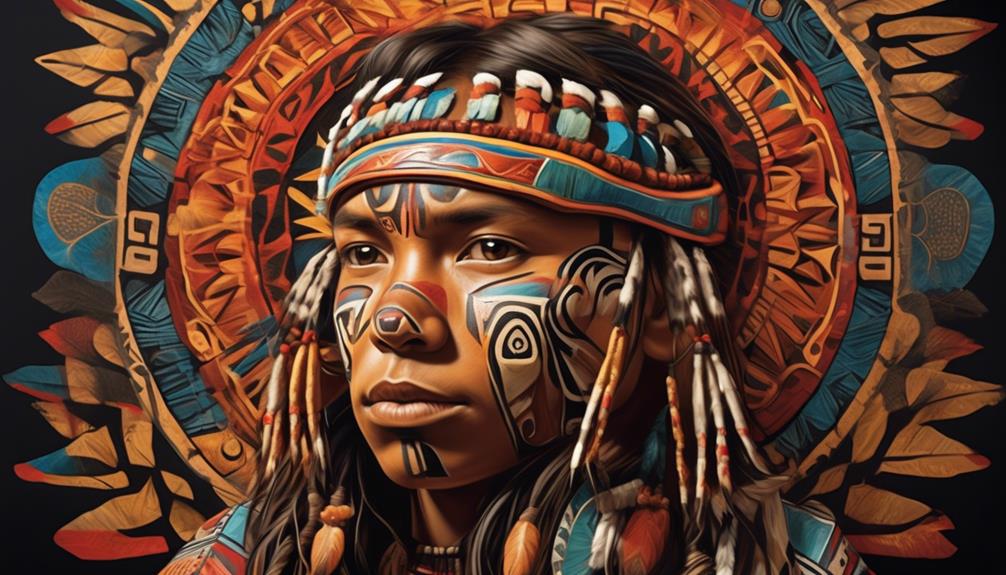
Exploring the historical perspectives on Indigenous identity reveals a complex interplay of cultural, social, and political dynamics that have shaped the understanding of Indigenous peoples' selfhood over time.
The colonial impact on Indigenous identity can't be overstated. The arrival of European settlers led to a systematic dismantling of Indigenous social structures, spiritual practices, and governance systems, as well as the imposition of foreign norms and values. This resulted in a profound disruption of Indigenous identity, as communities were forcibly removed from their ancestral lands and subjected to cultural assimilation.
However, despite the enduring colonial impact, Indigenous communities have demonstrated remarkable cultural resilience. Through centuries of adversity, Indigenous peoples have upheld their traditions, languages, and spiritual beliefs, fostering a profound sense of continuity and connection to their ancestral heritage. This resilience isn't only a testament to the strength of Indigenous identity, but also a rebuke to the notion that external forces can diminish the intrinsic essence of Indigenous selfhood.
- Systematic dismantling of Indigenous social structures
- Imposition of foreign norms and values
- Enduring colonial impact
- Remarkable cultural resilience
Contemporary Challenges to Indigenous Identity
Despite the enduring colonial impact on Indigenous identity, contemporary challenges continue to shape and influence the selfhood of Indigenous peoples. In the modern context, one of the foremost challenges is the issue of cultural appropriation. Indigenous cultures are often commodified and exploited for profit without proper acknowledgement or respect for their significance. This not only erodes the authenticity of Indigenous traditions but also undermines the cultural sovereignty of Indigenous communities. The misappropriation of sacred symbols, traditional knowledge, and artistic expressions perpetuates a cycle of exploitation that threatens the preservation of Indigenous identity.
Furthermore, the struggle for political sovereignty remains a significant contemporary challenge. Indigenous communities continue to battle for recognition of their inherent rights to self-governance and autonomy over their lands. The historical legacy of colonization has resulted in ongoing political marginalization, making it difficult for Indigenous peoples to assert their sovereignty within the framework of modern nation-states. The complexities of navigating political systems while preserving cultural heritage present a formidable challenge to the collective Indigenous identity.
Addressing these contemporary challenges is crucial in safeguarding the integrity and resilience of Indigenous identity in the face of evolving societal dynamics.
Intersectionality and Indigenous Identity
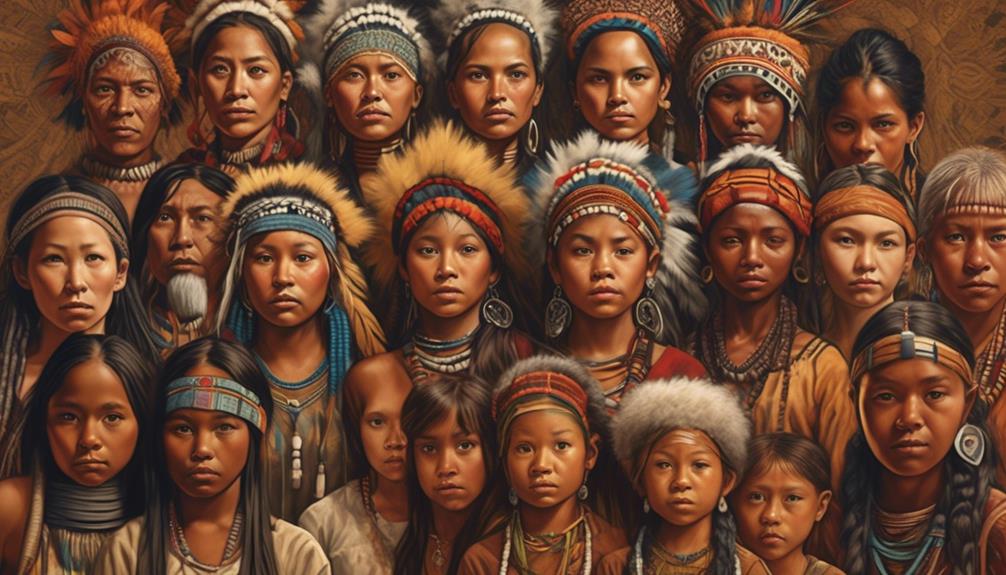
Navigating the complex web of identity, culture, and social structures, Indigenous peoples encounter intersecting forces that shape their lived experiences and self-perceptions. This intersectionality is influenced by historical legacies of colonialism and ongoing cultural appropriation, which further complicate Indigenous identity in contemporary society.
- Colonialism: The enduring impact of colonialism continues to affect Indigenous communities through systemic inequalities, loss of traditional lands, and cultural erasure.
- Cultural Appropriation: Indigenous cultures are often exploited and misrepresented, leading to a distortion of their identity and undermining their autonomy.
- Marginalization: Intersectionality exacerbates the marginalization of Indigenous peoples, as they face discrimination not only based on their ethnicity but also on other intersecting identities such as gender, sexuality, and socioeconomic status.
- Identity Formation: The intersection of various cultural, social, and political factors shapes the formation of Indigenous identity, leading to a complex and multifaceted sense of self.
Understanding the intersectionality of Indigenous identity is crucial for fostering a more inclusive and respectful society. By acknowledging and addressing the impact of colonialism and cultural appropriation, we can work towards creating a more equitable and empowering environment for Indigenous peoples.
Claiming Indigenous Identity: Who Gets to Decide?
The intersectionality of Indigenous identity, shaped by historical legacies and ongoing cultural challenges, raises important questions about who holds the authority to determine Indigenous identity in contemporary society.
The issue of claiming Indigenous identity is complex and sensitive, with significant implications for Indigenous communities and individuals. Community recognition plays a crucial role in this matter, as Indigenous identity is inherently tied to the collective experiences, traditions, and knowledge of a specific community. It's essential to respect and honor the protocols established within Indigenous communities for verifying and acknowledging identity.
Cultural appropriation further complicates the process of determining Indigenous identity. When individuals falsely claim Indigenous heritage or adopt Indigenous cultural practices without genuine connections to Indigenous communities, it not only undermines the integrity of Indigenous identity but also perpetuates harmful stereotypes and erases authentic Indigenous voices.
Therefore, it's imperative to involve and prioritize the voices of Indigenous communities and elders in discussions about Indigenous identity, as they hold invaluable knowledge and understanding of the complexities involved. Ultimately, the authority to determine Indigenous identity should reside within the Indigenous communities themselves, guided by their traditions, protocols, and lived experiences.
Frequently Asked Questions
How Has Globalization Affected the Perception and Preservation of Indigenous Identity?
Globalization has significantly impacted the perception and preservation of indigenous identity. Cultural globalization has led to increased awareness of indigenous cultures, but also poses a threat to their preservation. As traditional practices and languages are influenced by external forces, indigenous identity faces challenges.
Perception of indigenous identity has also evolved, with global connectivity shaping how it's understood.
Balancing preservation with the influences of globalization is crucial for the continued vitality of indigenous identity.
What Role Do Traditional Indigenous Languages Play in Shaping Contemporary Indigenous Identity?
Traditional indigenous languages are the heartbeat of our community, pulsing with the rhythm of cultural reclamation and identity formation.
Language revitalization is the cornerstone of our resilience, weaving a tapestry that connects us to our ancestors and propels us into the future.
As we breathe life back into our mother tongues, we reclaim our heritage and shape contemporary indigenous identity, carving a path paved with the echoes of our past and the promise of our tomorrow.
How Do Indigenous Individuals Navigate the Complexities of Dual or Multiple Identities?
Navigating dual or multiple identities involves cultural adaptation and identity negotiation. It's a complex process, requiring us to balance different aspects of ourselves while respecting each identity's significance.
Understanding the nuances of both identities is crucial in forming a cohesive sense of self. It's an ongoing journey that demands introspection and an openness to learning from our diverse experiences.
It's about embracing the richness of our identities and finding harmony in our multiplicity.
What Are Some Common Misconceptions About Indigenous Identity and How Can They Be Addressed?
Misconceptions about indigenous identity are pervasive. Addressing stereotypes involves recognizing the depth of indigenous cultures and the harmful impact of cultural appropriation.
Identity preservation is vital for indigenous communities. By dismantling misconceptions and respecting indigenous voices, we can support the preservation of their identity.
It's crucial to engage in meaningful dialogue and educate ourselves to honor indigenous identity, rather than perpetuating harmful stereotypes.
What Are Some Ways in Which Non-Indigenous Individuals Can Be Allies in Supporting Indigenous Identity and Rights?
As allies, we can demonstrate cultural humility by actively listening to and learning from indigenous communities. We should also engage in advocacy efforts to amplify their voices and support their rights.
Land acknowledgment is crucial, as it recognizes indigenous sovereignty.
Engaging in cultural exchange with respect and reciprocity can also foster understanding and solidarity.
These actions can contribute to a more equitable and inclusive society, promoting indigenous identity and rights.
Conclusion
In conclusion, the complexity of Indigenous identity can't be understated. According to a recent survey, only 25% of Indigenous people in the United States feel that they're accurately represented in the media. This statistic highlights the ongoing struggle for recognition and representation faced by Indigenous communities.
It's crucial for us to continue to engage in thoughtful and respectful conversations about Indigenous identity, and to listen to the voices of Indigenous peoples as they define and claim their own identities.
Mary is a passionate writer who brings creativity and a fresh perspective to our team. Her words have the power to captivate and inspire, making her an essential contributor to our content. Mary’s commitment to storytelling and dedication to promoting Indigenous culture ensures that her work touches the hearts of our readers. We’re fortunate to have her as part of our team.

